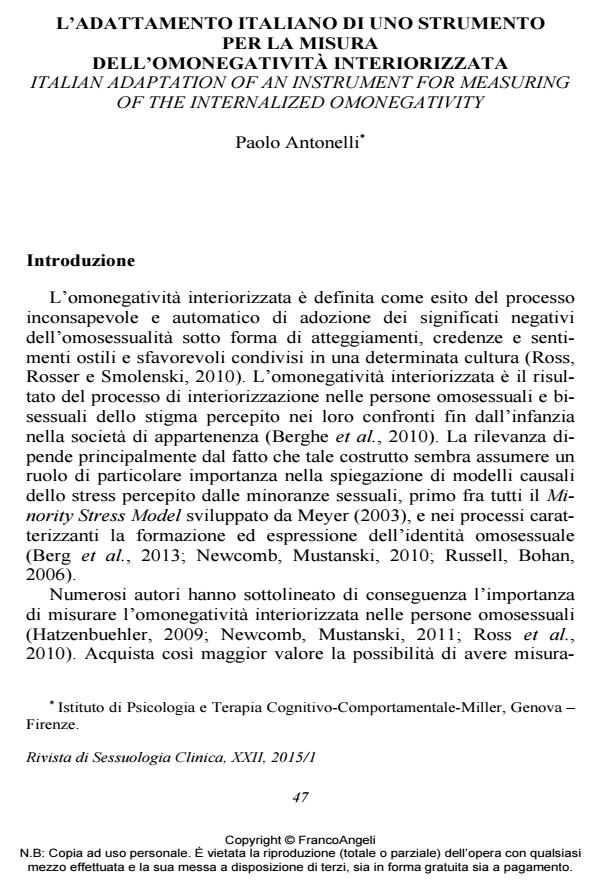Italian adaptation of an instrument for measuring of the internalized omonegativity
Journal title RIVISTA DI SESSUOLOGIA CLINICA
Author/s Paolo Antonelli
Publishing Year 2015 Issue 2015/1
Language Italian Pages 24 P. 47-70 File size 123 KB
DOI 10.3280/RSC2015-001003
DOI is like a bar code for intellectual property: to have more infomation
click here
Below, you can see the article first page
If you want to buy this article in PDF format, you can do it, following the instructions to buy download credits

FrancoAngeli is member of Publishers International Linking Association, Inc (PILA), a not-for-profit association which run the CrossRef service enabling links to and from online scholarly content.
Since in the Italian test view lacked a validated instrument for measuring internalized homonegativity in gay men and lesbians, the present study has had the objective of adapting to the Italian context the test Internalized Homonegativity Inventory (Mayfield, 2001). Findings have attested that the test in the Italian version shows good psychometric properties, as demonstrated through the verification of reliability as internal consistency, the measurement of correlations between the test scales, the verification of indices of validity of construct, discriminant, of criterion. Findings about the factorial structure have indicated, as for the original version, a structure of internalized homonegativity consisting of the three distinct dimensions of personal homonegativity, gay/lesbian affirmation, morality of homosexuality. Invariance analysis has allowed to conclude that this instrument is metrically invariant in relation to gender. In summary it is possible for practitioners and researchers to get in Italy valid and reliable measures of internalized homonegativity in gay men and lesbians by applying the Internalized Homonegativity Inventory.
Keywords: Adaptation, Italian version, test, internalized homonegativity, gay man, lesbian.
Paolo Antonelli, L’adattamento italiano di uno strumento per la misura dell’omonegatività interiorizzata in "RIVISTA DI SESSUOLOGIA CLINICA" 1/2015, pp 47-70, DOI: 10.3280/RSC2015-001003